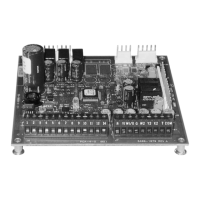BAS-SVN028K-EN 7
Zone Sensor Wiring
Wiring the zone sensor to the HVAC equipment varies
based on the control system to which the sensor is
connected. Reference one of the following electrical
schematics for proper wiring installation of the zone
sensor to the HVAC equipment.
Communication Wire
Use the correct communication wire to ensure reliable
communication between the zone sensor and the HVAC
equipment. Trane recommends the following wire
supplier and wire type.
Important: This sensor can only be used with
standalone HVAC equipment. It cannot be
used on a BACnet/MSTP link connected to a
BAS.
Suggested Supplier: Windy City Wire
• Plenum rated P/N: 043005AL
• Non-plenum rated P/N: 108760
Other wire may be used if it conforms to the following
physical characteristics:
• Twisted pair (2-conductor) plus shield.
• Characteristic Impedance: 100 and 130 ohms.
• Distributed capacitance between conductors: < 100 pF/
m.
• Distributed capacitance between conductor and
shield: < 200 pF/m.
• Foil or braided shield is acceptable.
• Wire diameter: 22 to 18 AWG.
External Sensor Inputs
The zone sensor supports three external inputs that can be
used to control the behavior of the sensor.
• Demand shed signal. A dry contact relay can be wired
to terminals 16 and 18. Closure of the contact indicates
to the sensor that a demand shed request is present.
• Motion Sensor or external occupancy signal. A dry
contact relay can be wired to terminals 17 and 18.
Closure of the contact indicates to the sensor that the
space is not occupied.
When the sensor is configured for occupied standby
control and it is in occupied mode based on a time
schedule. Closure of the contact indicates the space is
not occupied and the sensor enters occupied standby
mode.
• Space temperature signal. Use a 10k ohm, type 2
thermistor/sensor when using a remote mounted
space sensor wired to terminals 17 and 18, or wired to
HVAC equipment.
Important: Configure the Temp Sensor parameter as
needed. See 2/4 Configuration menu for
details.

